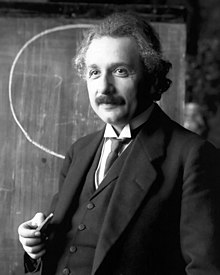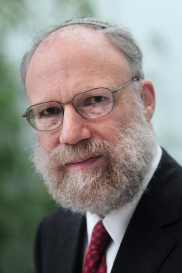IAS Workshop on Symplectic Dynamics 2: Wednesday

Happy Einstein Birthday!

Wednesday: 2012-03-13
- 9:00 - 10:00 Wilfrid Gangbo, Georgia Institute of Technology, “Lifting absolutely continuous curves from P(Td) to P2(Rd)” abstract
- 10:15 - 11:15 Jonatan Lenells, Baylor University, “Geometry of diffeomorphism groupos, complete integrability and optimal transport” abstract
- 11:30 - 12:30 David Ebin, SUNY, “Groups of diffeomorphisms and geodesics on them” abstract
- 2:30 - 3:30 Susan Friedlander, University of Southern California, “Well / Ill-posedness results for the magneto-geostrophic equations: the importance of being even”. abstract
Wilfrid Gangbo: Lifting absolutely continuous curves from P(Td) P2(Rd)

(chalk talk; joint work with A. Tudorascu)
This work extends earlier work on the space of probability measures on the torus
Let
I define
Let
Problem: Data:
Such a lift becomes important if I want to associate the rotation number. I want to write
Weak KAM: (A small fraction of what is known)
Existence of weak Lagrangian Tori:
∃ u∈C(td) h(x,c+∇u)=―h(c) uc(x)=c⋅x+u(t). ∂uc ϕ ∀ x0∈Td ∃v0 (xt,pt)=ϕt ∀ T u(xT)−u(x0)=∫T0[l(x,˙x)+c⋅˙x+―h(c)]dt limt→∞^xtt=−∇―h(c).
Specific to finite
Given
Obstacle in infinite dimensions:
Let
If
(wash board…)
Let
Pseudo symplectic form: ….going faster and I’m not keeping up with the typing.
Theorem (Gangbo-Kun-Pacuni 2011):
Ω ∃ XH −dH=Ω(XH,⋅) ˙f=XH(f)⟺∂tf+∇x(vf)=∇v(f(∇V+∇W∗ρ)).
I want to state the analog of the weak KAM theorem in our context.
Theorem Let
∃ U:P(Td)→R H(μ,c+∇wH)=―H(c). - Given
σ0∈P(Td) ∃ v0:Td→Rd f0=σ0δv0 ft=σtδvt, U(σt)−U(σ0)=∫T0[L(σt,vt)+∫Rdvt⋅cdσt+―H(c)]dt. - We also have
|1T∫T0dt∫Rdvtdσt+∇―H(c)|≤const√T.
Questions:
Mather: This has connections with fluids?
Answer: Kinetic theory. Consider the system
Jonatan Lenells: Geometry of diffeomorphism groups, complete integrability and optimal transport

(pdf slides; Happy
(joint work with B. Khesin, G. Misiolek, S. Preston)
Outline
- A new equation
- Geometry of
Diff(M) - A sphere
- Optimal Transport
- Geometric Statistics
A new equation
M μ(M) M - This is an exciting equation because it is completely integrable for any
M - This is a geodesic equation on
Diff(M)/Diffμ(M) - Describes
˙H1 - reduces to the Hunter-Saxton equation for
M=S1
abc-metric. You can add some other terms to the original
The equation induced by these choices has some degeneracy issues. These can be resolved by quotienting out part of the phase space. The function
Jacobian determinant.
A sphere
Theorem (Khesin-Misiolek-Lennels-Preston): The map which takes the cosetThis isometry lets them transport all the questions about the geodesic equation on this complicated Diff phase space into corresponding questions about geodesics on the sphere. Since we understand the sphere well, we can conjugate results there using the mapping to obtain explicit solution formulae for the geodesic equation. Magical integrability!
Preceding works.
Khesin-Misiolek 2003: Showed Hunter-Saxton may be viewed within the Euler-Arnold framework.
Lennels 2006: Recognized the image of the map as a portion of the sphere.
Optimal Transport
Optimal Transport. Wasserstein distance between two probability measures.Moser 1965, Ebin-Marsden 1970, Otto 2001, also Benamou-Brenier.
The
Geometric Statistics
Statistical model.Fisher-Rao information metric.
Theorem (KMLP): The
This is another reason why we think this metric is important. It arises from many different points of view.
Summary
- We found a new integrable PDE.
- The PDE is a geodesic equation on a quotieted diff with
˙H1 - A sphere
- One can understand what is going on using the optimal transportation point of view using the
˙H1 - This metric coincides with a basic metric arising in geometric statistics.
Open problems
- Global weak solutions of the PDE? All solutions break in finite time because you hi the boundary of the diffeomorphism coset. However, there is no problem when you view the dynamics on the sphere. The motion along the great circle may be continued. This type of development has taken place already in the context of the Hunter-Saxton equation. The process appears to be more complicated in this more general context since the Jacobian can vanish.
- Transfer results from geometric statistics into this diffeomorphism quotient. Then reinterpret these objects in the setting of PDE. Amari-Nagaoka 2000 alpha-connections, dual connections.
- Develop an optimal transport theory based on the
˙H1 - Find a Lax pair.
- Find a bi-Hamiltonian structure.
- Analyze the associated two-component equation (c.f. Lennels-Zhao 2011). There is a 2-component Hunter-Saxton so that object suggests we might find a corresponding generalization. This has been observed by LZ.
David Ebin: Groups of diffeomorphisms and geodesics on them

(joint work with Stephen Preston)
Maps from a manifold to itself. Discussion of various topologies of such maps.
- Volume preserving maps. Diffeomorphisms (Volumorphisms)
- Even dimensional manifolds with a symplectic form. We can consider the maps which preserve the symplectic form. (Symplectomorphisms)
- For odd dimensional manifolds, we can consider maps which preserve the contact form. (Contactomorphisms)
Boothby-Wang fibration.
Susan Friedlander: Well / Ill-posedness results for the magneto-geostrophic equations: the importance of being even

(joint work with Vlad Vicol, Walter Rusin, Francisco Gancedo, Weiran Sun)
Homage to Oscar Wilde…
Amain theme is that there is a difference in behavior of solutions in Active Scalar Equations when the associated Fourier multiplier is even versus odd.
Active Scalar Equations; Incompressible Fluids
Consider
- ODD Symbol: Locally well-posed in Sobolev spaces. Commutator in energy estimates. **Chae et. al, Friedlander-Vicol.
- EVEN Symbol: Lipschitz ill-posed in Sobolev spaces. Friedlander-Vicol; Nonuniqueness for
L∞
SQG Equation:
Constantin-Majda-Tabak 1994, Resnick 1995 (Chicago thesis; unpublished), Wu, Cordoba, Chae, Iyer, Ju, Fefferman
The SQG equation had been known in the geophysics community before its introduction to the mathematical community by Constantin et.al.
Local existence for smooth initial data BUT global existence of smooth solutions is OPEN (just as it is open for 3D Euler). Cordoba and Fefferman have ruled out the existence of certain solution scenarios.
“Modified” SQG Equation (Okhitani)
Insert a power ofNote: result holds more generally when the symbol is ODD and order
IPM equation: singular integral operator with EVEN symbol
Darcy’s law.Cordoba-Gancedo-Orive 2007
Regular initial data, local existence, weak solutions, SQG and IPM present different behaviours. Global existence of smooth solutions is OPEN.
Even symbol:
There is very different behaviors among these equations for rough data. “Patch type initial data”
SIPM equations (even, unbounded)
Friedlander-Gancedo-Sun-Vicol (2012)
- Locally Lipschitz ill-posed in
Hs, s>2 0<β≤2 Td×[0,∞] - Locally well-posed for some “patch-type” weak solutions. Proved for
0<β<1 R2
Symbol:
Magnetogeostrophic (MG) equations
Friedlander-Vicol 2011Long symbol
Cauchy problem is ill-posed in Hadamard sense in Sobolev spaces. There is no Lipschitz solution map.
Ill-posedness: singular, even, symbol
Active scalar equation. Special direction with indexDefinition: Locally Lipschitz
$$| \theta_1 (\cdot, t) - \theta_1 (\cdot, t)|X \leq K | \theta1 (\cdot, 0) -\theta_2 (\cdot, 0) |_Y. $$
The spaces
Theorem: Under the many assumptions on
Linear problem
Linearize aroundContinued fractions, characteristic equation. These ideas where used by Michalkin and Sinai to show unstable eigenvalues for the shear flow for Navier-Stokes equations.
Ill-posedness of the nonlinear problem
Follows a proof by contradiction.Effects of dissipation: MG
Dissipation:Using De Giorgi techniques, Caffarelli-Vasseur proved critical SQG. What can we say about the MG equation?
- Case
1/2Mγ<1 Hs s>52+(1−2γ) - Case
0<γ<1/2 - Case
γ=1/2